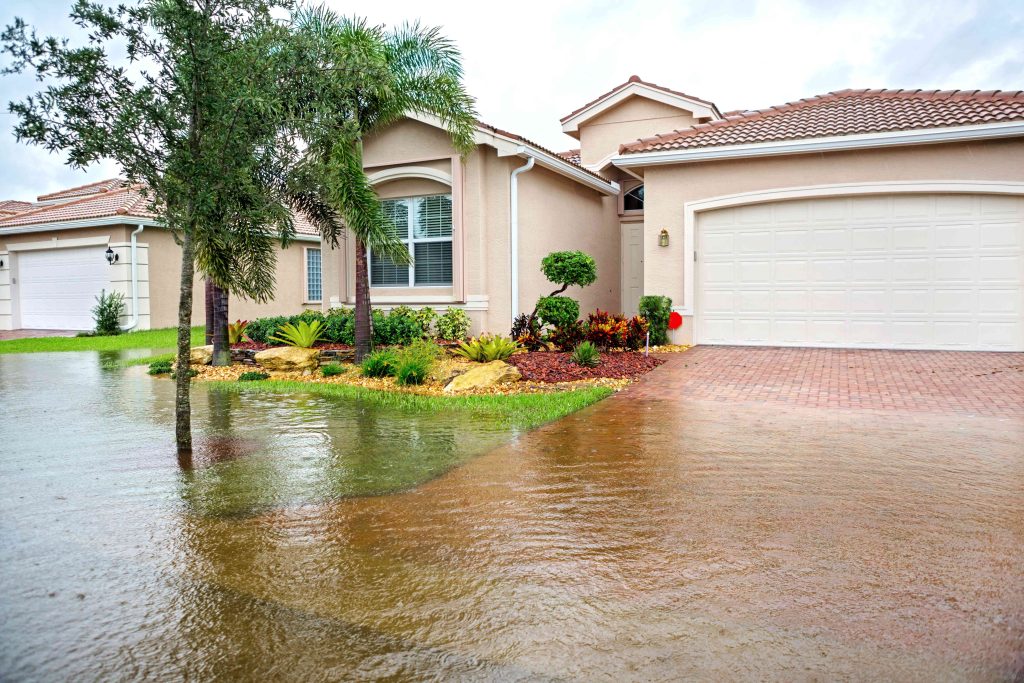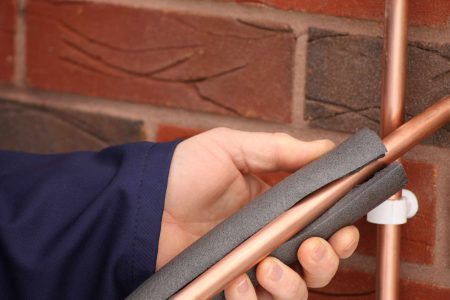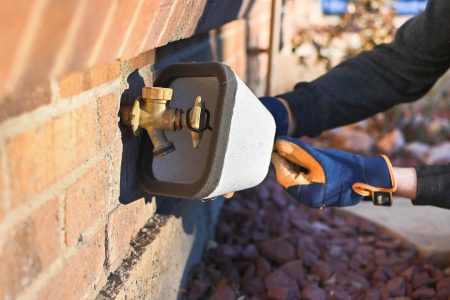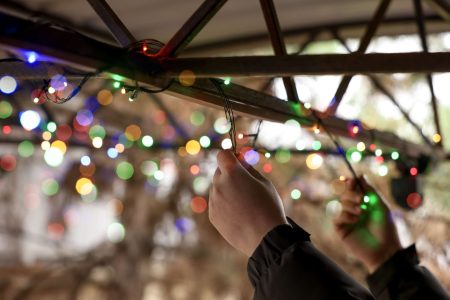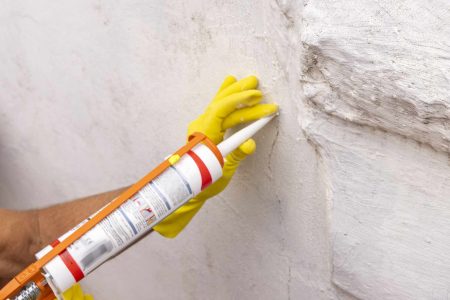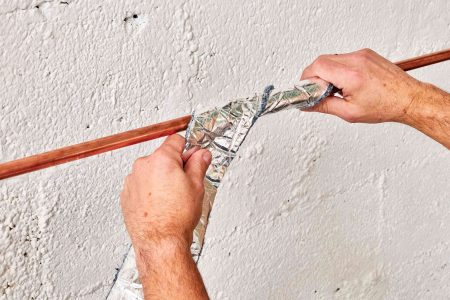Most homes aren’t prepared for extreme weather, whether it be strong winds, flooding, wildfires, or other events. Luckily, there are some renovations you can do to prepare your home for extreme weather and increase its odds of weathering the storm.
Below, we’ve listed all the home updates you need to make to protect your home from extreme weather and offered expert advice for which renovations you should prioritize and why.
Meet the Expert
- Mike Thomas is a storm restoration lead at GAF.
- Steve Leasure is VP of Operations at Rainbow Restoration, a Neighborly company.
Does Your Home Need Weather-Related Updates?
How do you know if you should prepare your home for extreme weather? And, if so, which updates should you prioritize?
“Homeowners should consider the most common extreme weather conditions in their area and their frequency to determine what protective measures to take first for their home and roof,” Mike Thomas, a storm restoration lead at GAF, says.
Thomas recommends homeowners along the Gulf or the Atlantic Coast of the United States to prioritize preparing for hurricanes and high winds while others in the Midwest should protect against tornadoes, hailstorms, or heavy snow.
Here are the most effective ways to prepare your home for extreme weather.
Want more home reno project tips and inspiration? Sign up for our free daily newsletter for the latest how-tos, reno guides, and more!
Upgrade Your Roof
If your roof is aging, don’t wait around to replace it. A strong, sturdy roof is crucial when extreme wind and rain come your way, especially if you’re looking to avoid any leaks.
Use Proper House Wraps and Flashings
Your roof isn’t the only architectural component preventing water from entering your home. Having the walls, windows, trim, doors, and other exterior components properly flashed and sealed is just as important.
“In preparation for a hurricane or severe storm, homeowners can also waterproof their home by sealing any cracks, gaps, or breaks in the foundation, walls, and windows with caulk, a popular, cost-effective sealant commonly found at national home improvement stores, to lower the risk of water intrusion,” Thomas advises.
Opt for Solar Power
Not only will solar power help you save on your utility bill, but an aptly sized solar-powered system can power your home in the event of a power outage.
Install a Backup Generator
During intense storms, there may be increased chances of you losing your power, so installing a backup generator can be a lifesaver when your home loses power.
Improve Gutters and Drainage
Anything you can do to encourage water to efficiently flow away from your home is of great value during heavy rainfall.
Thomas explains how homeowners can protect their roofs against extreme weather by cleaning their gutters and downspouts to ensure proper drainage from the roof and trimming or cutting back branches hanging over the roof to minimize damage to the entire roofing system.
Replace Your Windows
Upgrading your standard windows to impact windows can prevent window breakage during extreme weather, which opens your home up to extensive damage.
Put Up Storm Shutters
If upgrading your windows isn’t within your budget, putting up storm shutters is a good alternative.
“If the home is in an area that is regularly at risk for hurricanes, they can also put up storm shutters that can protect their windows and glass doors from flying debris that could permeate the house,” Thomas explains.
Buy Steel Doors
A wooden or fiberglass door can only protect your home so much in the event of strong winds. Swapping them for wind-rated steel doors can make all the difference.
Thomas recommends homeowners to double-check that their doors around the house are reinforced and secured with sturdy locks. As another layer of protection, they can install deadbolts to lower the chance of any doors blowing off from turbulent winds.
Improve Your Insulation
Improving your home’s insulation can make a major difference in events of extreme heat and cold especially if your current one is outdated or worn out. This will help keep your home’s temperature regulated during harsh weather.
Install an Emergency Sprinkler System
Emergency sprinkler systems spray the perimeter of your home in the event of a wildfire. Once your house is surrounded by fire, they’re the last line of defense.
“An emergency sprinkler system creates a moisture barrier around your home, making it less susceptible to ignition,” Steve Leasure, the VP of Operations at Rainbow Restoration, says.
Install Fire-Resistant Vents
Fire-resistant vents protect homes from wildfire risk by blocking entry points that may be vulnerable to flying embers.
Choose Your Exterior Colors Wisely
While that dark, moody exterior color may be beautiful, it can be detrimental during extensive heat waves by soaking up excess heat. Especially if you live in an area where wildfires are common, make sure you’re choosing the correct exteriors to protect you and your home.
Upgrade Your Siding
Upgrading your siding can be crucial for preventing water entry during rain, especially in the event of heavy rainfall and blowing rains.
Install Water Collection Systems
Droughts and heat waves can quickly make water a scarce commodity. Installing a rainwater collection system and saving rainfall throughout the year can better prepare you for water restrictions and shortages.
Install Whole-Home Air Purifiers
Even if your home isn’t at risk of catching fire during a wildfire, you and your family could still be at risk of breathing smoke and air pollutants coming from the fire. Installing a whole-home air purification system will help ensure the air inside your home is filtered and as clean as possible.
Use Your Landscaping to Your Advantage
Something as simple as updating your landscaping can make all the difference during extreme weather events.
To prep for fires, remove any flammable landscaping materials from your home’s perimeter and replace them with fire-resistant materials. Incorporating native plants and grasses can also prevent soil erosion during floods.
Trim or Remove At-Risk Trees
We all love trees, but having large trees near your home can be a huge risk during heavy rain, high wind, and heavy snow.
Even young, healthy trees can easily be toppled during hurricane-force winds. Keeping trees trimmed and removing those that pose too great a risk will help protect your home.
Build a Fire-Resistant Deck
The last thing you want as a wildfire encroaches on your yard is a flammable deck extending from your home. Look for decking that is ignition-resistant and, if it does eventually ignite, intentionally burns slowly.
Reinforce Garage Doors
Garage doors may seem big and strong, but they’re really flimsy. When paired with their large, flat surface area, they make the perfect sail for a windstorm.
“An additional way to protect a home from being damaged during high winds, hurricanes, or tornadoes that should be left to a professional is to reinforce any overhead garage doors to reduce the risk of them blowing in and compromising a home’s building envelope,” Thomas says.
Read the full article here



